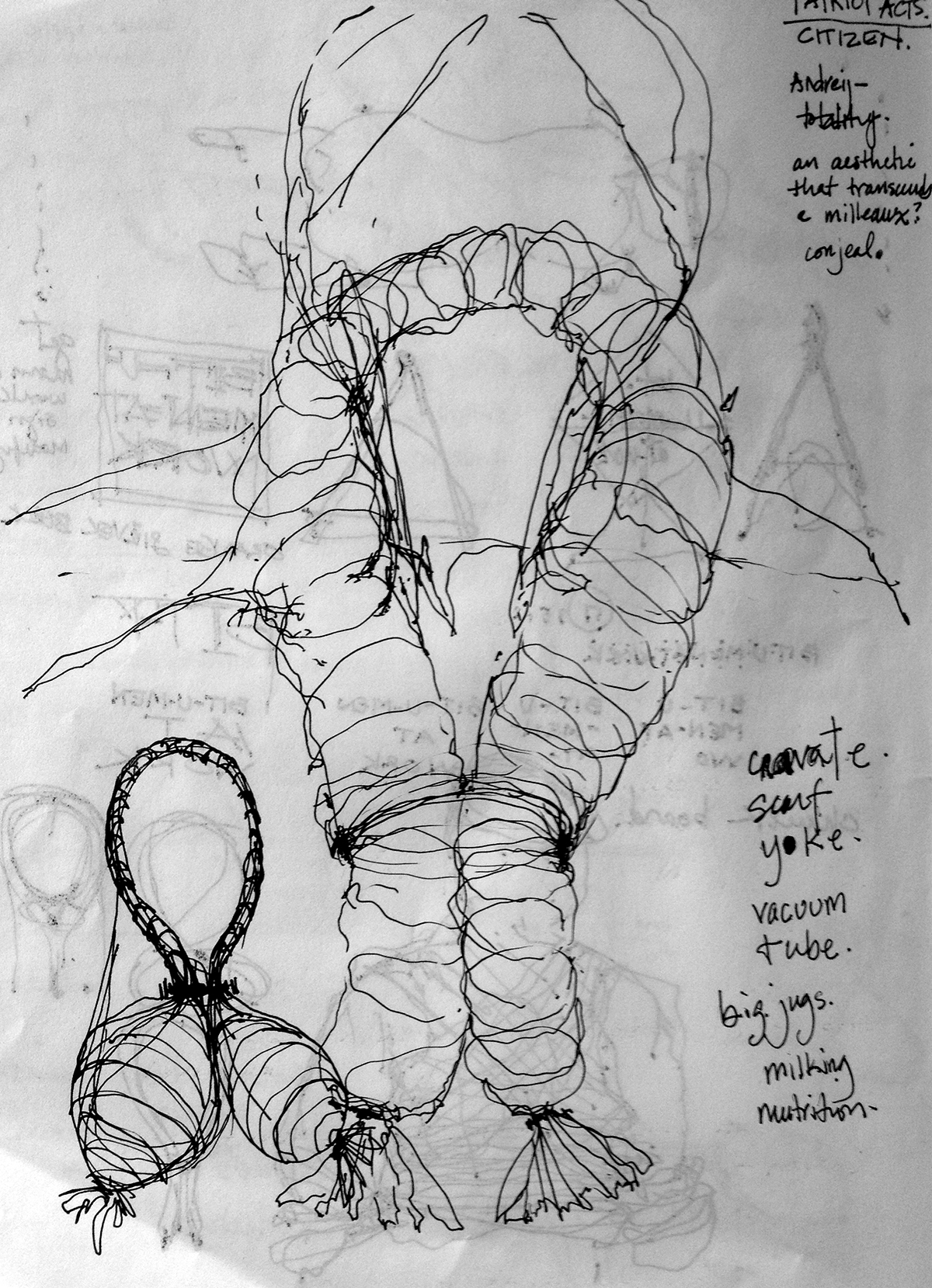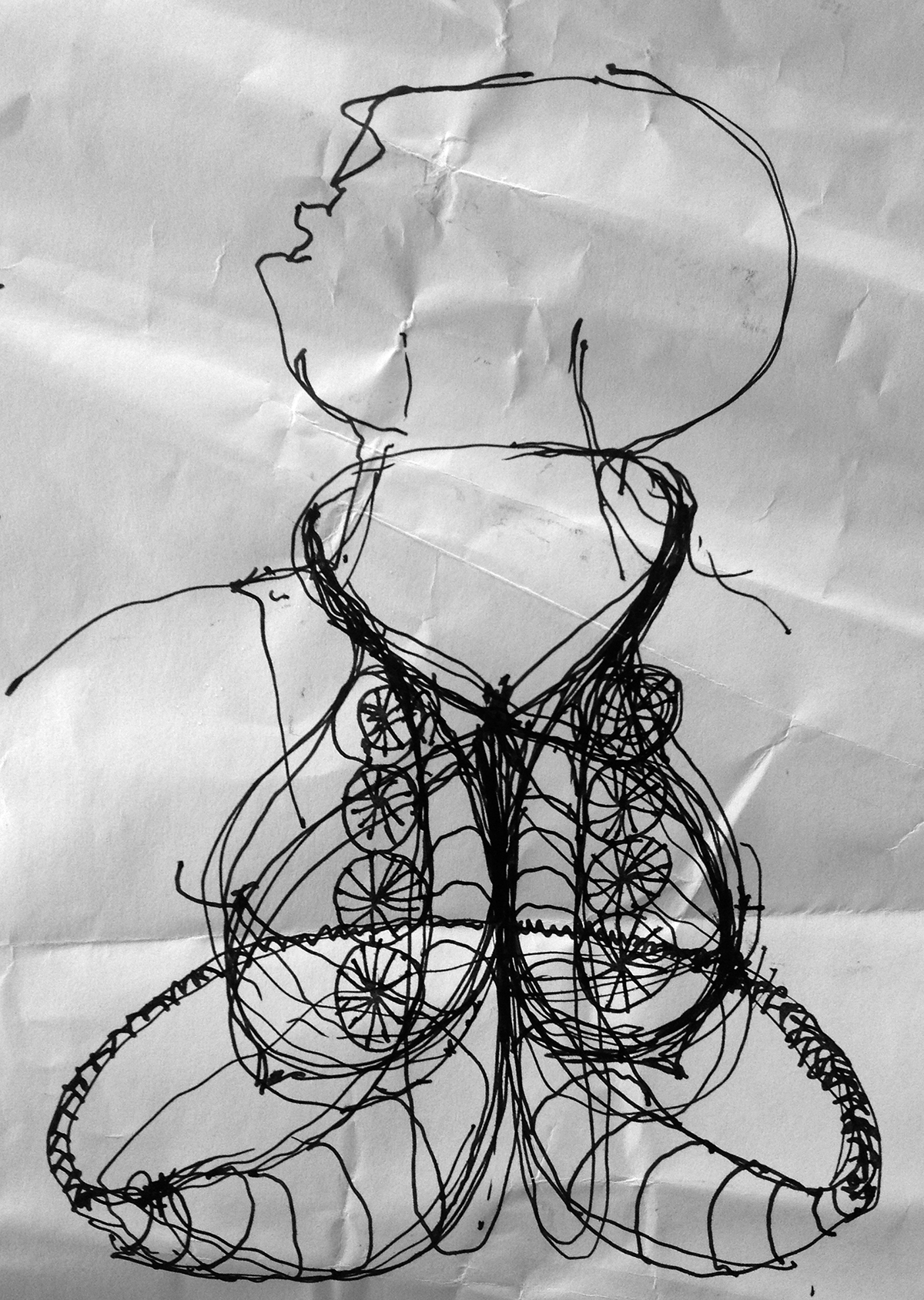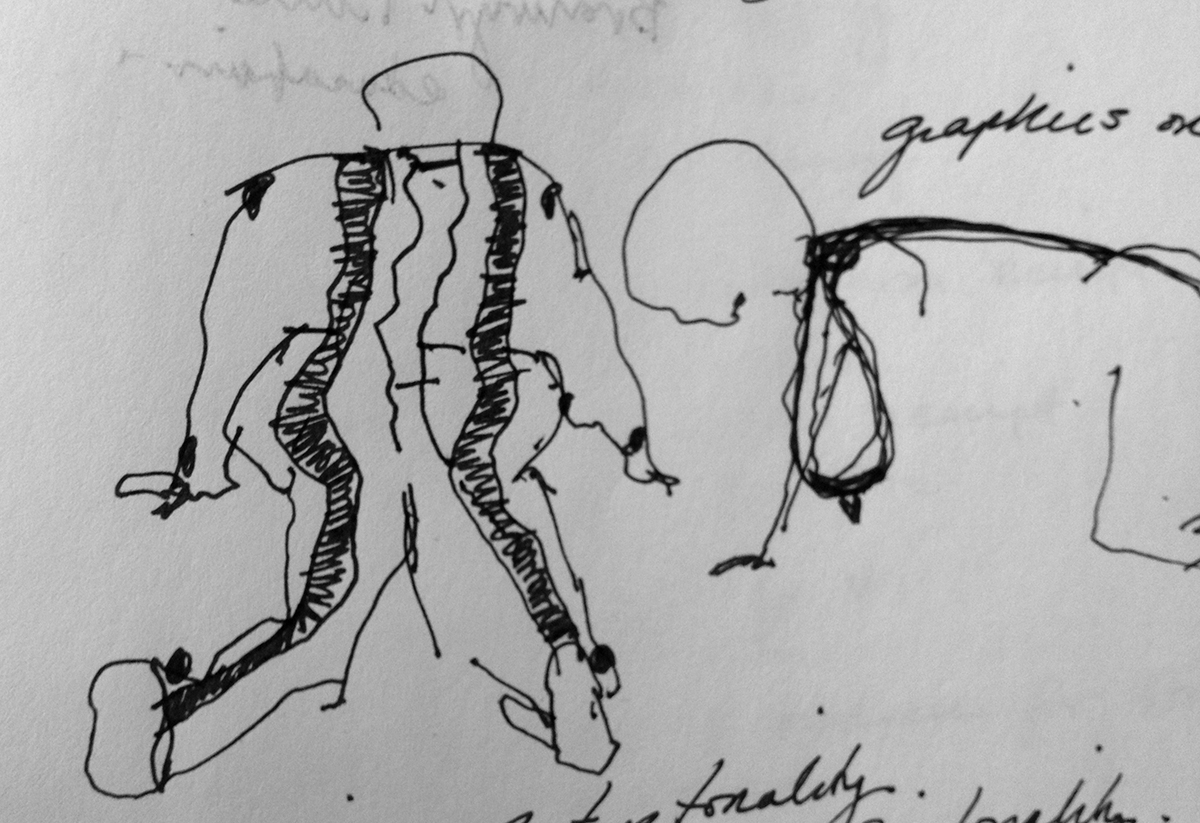Preston, Julieanna and Jen Archer-Martin. bit-u-men-at-work [performance and floor talk]. At PSI Fluid States: Performing Mobilities, Margaret Lawrence Gallery, Melbourne AUS, Oct 2015.
It was night on a desert road in late spring. In the dim remnants of the day’s unrelenting light emerged a snorting beast bathed in headlamps, warning bleats and high-visibility vests. Its rank breath met the plummeting evening air temperature as gaseous excretions. In a half-dazed state produced by the vibrations of hurdling over cracked pavement at 120 miles per hour, my approach to this theatrical performance inhabiting the horizon line quickly transformed into a participatory interaction, a shift marked by orange cones and MEN AT WORK signs. Slowing down, coming to a full stop, meant the roar of my truck engine accompanied by a cassette player belting out Dixie Chicks was abruptly replaced by a complex symphony of mechanical parts grinding, spinning, whirling and chugging in unison for the sole purpose of laying a new road surface. Moths and other insects took refuge in my low beams and fluttered into the truck cab un-phased by the graveyard of splattered exoskeletons adorning the windshield.
The construction caused the continuous line on the map propped on my dashboard to misrepresent the physical reality of a gap approximating the length of the road-eating-road-spewing mechanical creature. This was a moving gap, one that crept upon the flat sand-laden topography at a snail’s pace, or more accurately, 10 feet per minute. I could only trail behind in a stop-start manner, wasting time, fuel and patience, until other vehicles eventually joined the queue. As an entourage of fossil fuel expending groupies on a pilgrimage from here to there, we were eventually ushered out onto a makeshift track, into the night’s abyss, through waves of diesel exhaust, to the other side of Route 40, a smooth unmarked virgin surface. The speed at which we left the spectacle was inversely proportional to the circuitous procession around the scene which afforded one to gawk at the machine’s digestive process and its attendants, all engulfed by an oily black heat and consumed by the mandate to make forward progress.
This is a true story; it really did happen. While it occurred in the USA, not Australia, a notion of performance mobilities is easily transferable, if not heightened, by the greater degree to which isolated communities in outlying regions of the Australian continent rely on the maintenance of approximately 823,217 km of roads for sustenance. What irony that such roads are called the life-blood of the nation! A glance at the Australian Transport Authority website confirms the nation’s investment into transportation including its dependence on a variable workforce, road work science and technologies and above all, the raw materials that make up asphalt cement: a concoction of 95% sand, stone and gravel bound together by 5% bitumen, a viscous mixture of hydrocarbons obtained naturally or as a residue from petroleum distillation.
This performance focussed on bitumen, a material substance that according to scientific biogenic theory is a natural transmutation of the dead life of fossils of plants and tiny marine organisms into black gold for millions of years using little more than heat, pressure and time. This work mined the geological and environmental systems of bitumen and its interface with human labour and transportation networks. I employed a feminist-new materialist perspective to create a durational art-work that sought to draw the general public into a close encounter with this material and its road-tending proclivities. This artwork saw me immersing myself, as a white American/New Zealand middle-aged woman/artist/research academic into the world of a road repair crew as an interested observer or inexperienced trainee; to get close myself to the process, the machines, the people, the landscape and the material. Here I intentionally aimed to insert myself as a foreigner into a cultural and geographical-saturated context as a means of advancing my creative practice and testing alternative modes of public engagement especially outside the gallery or an educational institution.
Credits: Kerensa Diball and Scott Morrison, performance caretakers.




